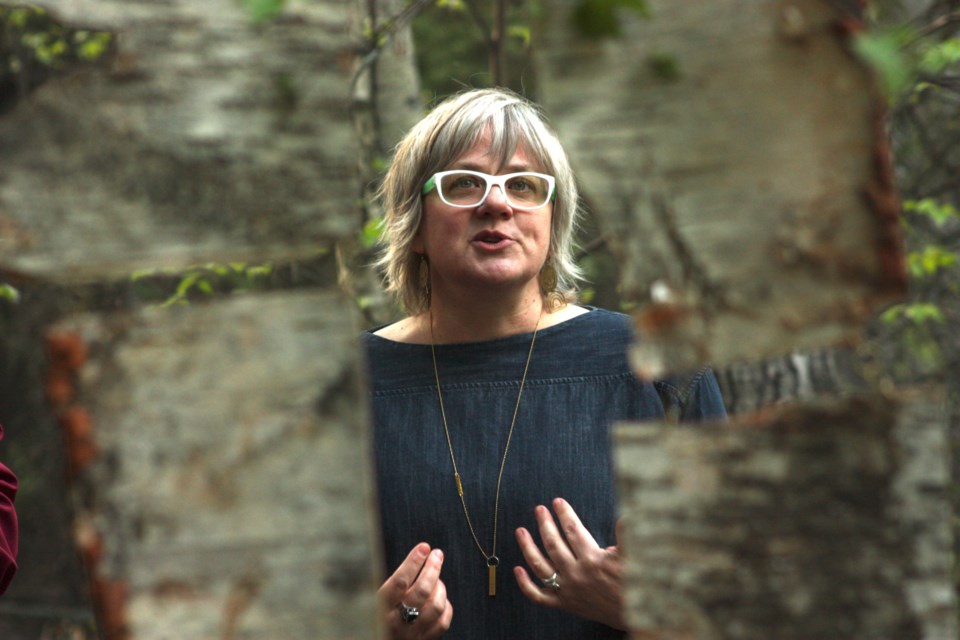ATHABASCA – Small towns are renowned for having hidden gems — a family pizza spot, a food truck with the best ice cream around, or a lookout with a fantastic view can all be a core part of a community.
Athabasca’s art community has started to develop a hidden gem of its own ever since COVID-19, when Tom and Marilyn Johnson opened their rural property to artists from across the world and called it Mossy Trails.
“For a few years, it was just sort of friends coming out and staying and reconnecting with nature and having those opportunities to create, and that developed into art residencies,” said Marilyn.
Today, parts of the property serve as the Boreal Gallery, an outdoor art exhibit with pieces from artists who’ve stayed with them or been involved with the project, including a duo of muralists from Calgary, and as of May 29, local artist Lori Claerhout.
Claerhout’s piece, The Dreamland Quilt, was inspired by the natural feelings of, hope, despair, and the continuing evolution thereof. Using birch skin from logs her and her partner use to heat their home as a base, Claerhout typed up dream journal excerpts on her mother’s old typewriter and hung them in a quilt pattern.
“My idea with it is that it will live in nature and die in nature. My hope is that nature will start to interact with the piece and start to take over,” said Claerhout. “I would be so happy if moss found a way to live on it, or lichen, or bugs and all that. I also know that it will collapse at some point.”
The quilt is at home in the trails, which are loosely curated by the elder Johnson’s son Nick, an acclaimed artist in his own right. While he has displayed pieces in more traditional galleries, including the Alberta Gallery of Art, Nick said he believes nature can enrich pieces in a unique way.
“Personally, I prefer to be outdoors, and prefer a backdrop of moving trees and that kind of thing. I think putting artworks and sculptures in those settings enlivens it in a way that I respond to,” said Nick. “The sterility of the regular gallery, it has its place, but we were curious about some of the things I had been building and whether it was more interesting in a natural landscape.”
Many of Nick’s pieces are displayed in the Boreal Gallery as well, including a collection of work’s he calls Temple — wooden human-like effigy’s that watch over the forest. Since the pieces are made of wood, similar to Claerhout’s piece, they’ve decayed over time. For both artists, that’s part of the appeal.
“I love that nature will break it down and consume it, and I think that’s true of all of our efforts,” said Nick. “I find a real freedom in that because nothing I do has to matter — I’m free to make mistakes, explore, and live knowing everything I make or do will rot.”



